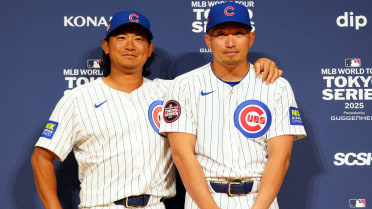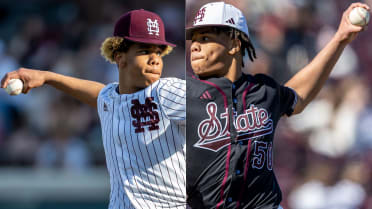Behind the Mets' decision to draft Gooden in '82
NEW YORK -- Doubtless, the Mets were intrigued by Shawon Dunston. A talented shortstop born and raised in Brooklyn, Dunston was a wheelhouse type of prospect for the Mets and their new scouting director, Joe McIlvaine, entering the 1982 Draft. But Dunston went first overall to the Cubs. Sitting on the fifth overall pick, the Mets never had a chance.
The next three players off the board didn’t intrigue the Mets as much as they did other teams. So when the fifth pick approached, McIlvaine had a clear choice with two names atop his Draft board.
One was Sam Horn, a talented California high schooler whom Mets scouts very much liked. Some predicted outputs of 30 home runs and 100 RBI from Horn in the not-too-distant future. As McIlvaine put it, “You don’t get that on too many guys.”
The other was Dwight Gooden, whom Mets scouts knew as well as anyone in that Draft. At the time, the big league team still trained in St. Petersburg, Fla. So when McIlvaine’s scouts came to town for Spring Training, he routinely instructed them to cross the bay and check out Gooden at Hillsborough High School in Tampa.
“He was the epitome of what you want in a prospect,” McIlvaine said. “He was 17. He was -- I don’t want to say skinny, but his body was still filling out. He was loose-bodied. He had two pitches. And everything that you looked at with this guy said to you he’s going to get better.”
For all those reasons, the Mets selected Gooden over Horn with the fifth overall pick in 1982. At the time, it wasn’t an obvious decision. In retrospect, it was brilliant. While Horn went on to produce at respectable levels, hitting 62 home runs over eight big league seasons and retiring with a .797 OPS, he simply did not have a Gooden-type career.
On the strength of a Rookie of the Year Award, a Cy Young, an 11-year tenure in Flushing and one of the greatest pitching seasons in Major League history, Gooden on Sunday will become the sixth Mets player to have his number retired at Citi Field. (His teammate, Darryl Strawberry, will become the seventh later this year.)
“You don’t get that with too many of them,” McIlvaine said. “It [simply] justifies and makes you feel good about your scouts too, that they identified him and were able to go with him. It’s just a tribute to the organization at that time.”
Unlike Strawberry, who was the consensus No. 1 overall pick two years earlier in 1980, Gooden profiled more as a mid-first rounder. Entering the ’82 Draft, McIlvaine was confident enough that Gooden would still be on the board at No. 5. He was also convicted in his evaluation of the pitcher, given how many of his scouts had seen Gooden in person.
Less than a year later, the Mets scheduled a game for their Single-A Lynchburg team to play the Salem Redbirds at Shea Stadium, before the Major League game that night. In attendance that afternoon was partial team owner Fred Wilpon, who watched a teenaged Gooden strike out 13 batters over 8 2/3 innings. Seeing McIlvaine in the stands, Wilpon walked over and remarked: “Nice pick.”
“And the next year, of course,” McIlvaine said, “he’s pitching for us in the big leagues.”
Senior Reporter Anthony DiComo has covered the Mets for MLB.com since 2007.




